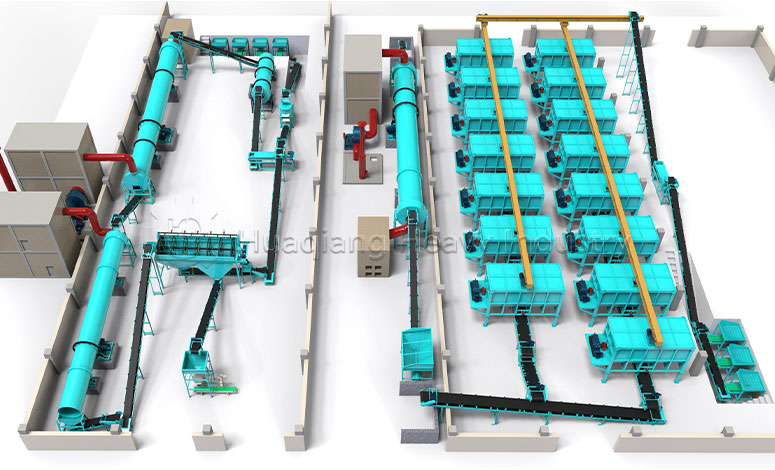From Waste to Wonder: How Bio-Organic Fertilizer Production Lines Nourish Our Planet?
In today’s pursuit of sustainable agriculture, efficient bio-organic fertilizer production lines are quietly transforming our relationship with the land. Imagine agricultural waste and livestock manure—often seen as “trash”—being ingeniously converted into “black gold” that nourishes crops. This process not only reduces environmental pollution but also creates circular economic value. So, how does this production line work?

It all starts with raw material pretreatment. Collected organic waste undergoes dehydration, crushing, and mixing to ensure uniform and efficient subsequent fermentation. Next comes the core fermentation stage: in intelligently controlled aerobic fermentation tanks, microbial communities actively break down organic matter, naturally raising temperatures to 60–70°C to effectively eliminate pathogens and weed seeds. This process is like a natural “magic show,” transforming waste into stable humus.
Then, the refining phase begins. The semi-finished product passes through crushers, rotary screener machine, and rotary drum granulator to form uniform, easy-to-apply fertilizer pellets. Modern production lines often include coating machines that wrap the pellets in protective layers to minimize nutrient loss. Finally, automated packaging and palletizing systems handle the finished products, ensuring the fertilizer safely reaches the fields.
Notably, bio-organic fertilizer production lines often collaborate with other fertilizer equipment. For instance, when combined with inorganic fertilizer lines, they produce organic-inorganic compound fertilizers that provide both immediate and long-term nutrients. Adding microbial agent filling equipment can enhance the fertilizer’s biological activity. Such integrated designs improve resource efficiency and offer customized solutions for diverse agricultural needs.
In summary, bio-organic fertilizer production lines are not just marvels of technology but also embodiments of ecological wisdom. They show us that protecting the Earth and boosting agricultural yields can go hand in hand—so the next time you see lush, productive fields, remember these unsung heroes of the “waste transformation” story!
